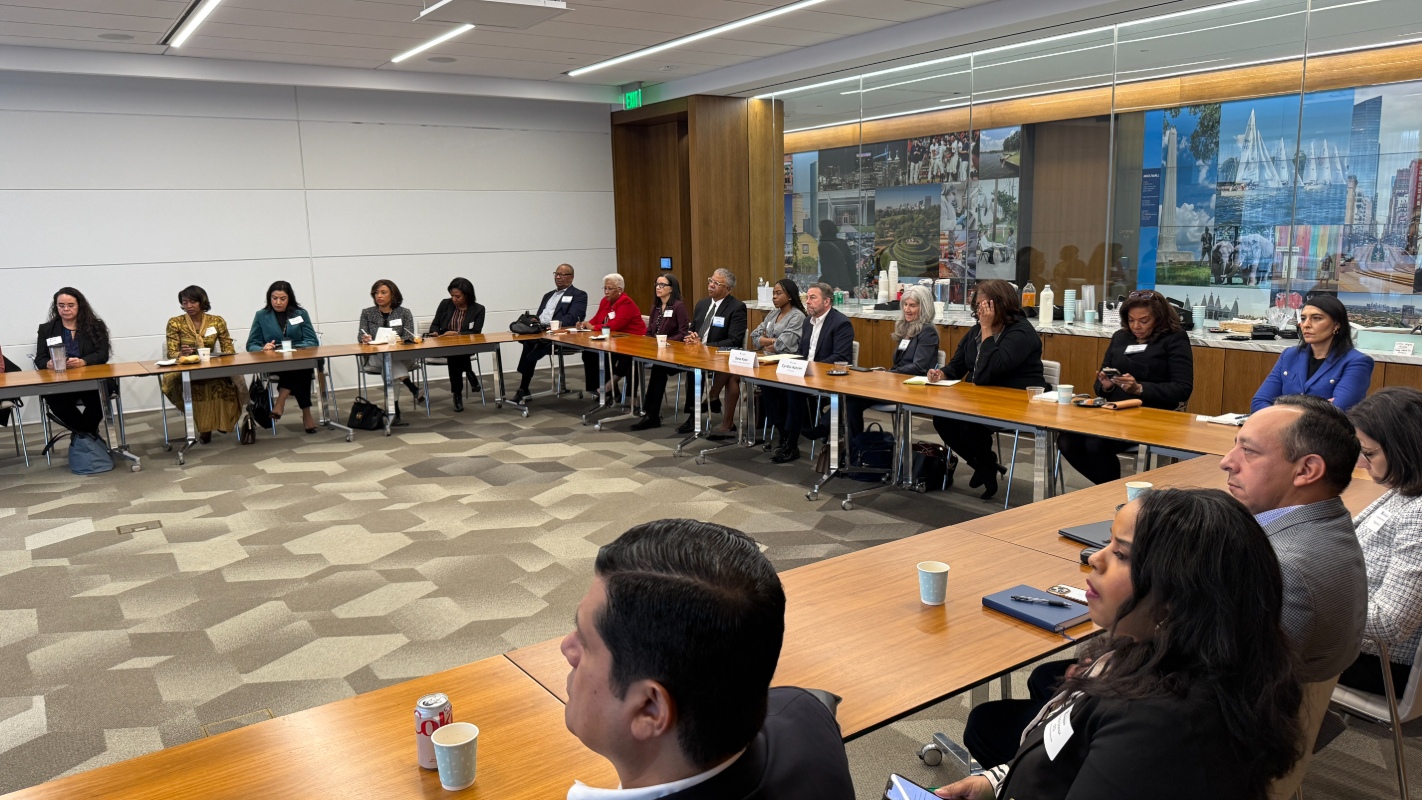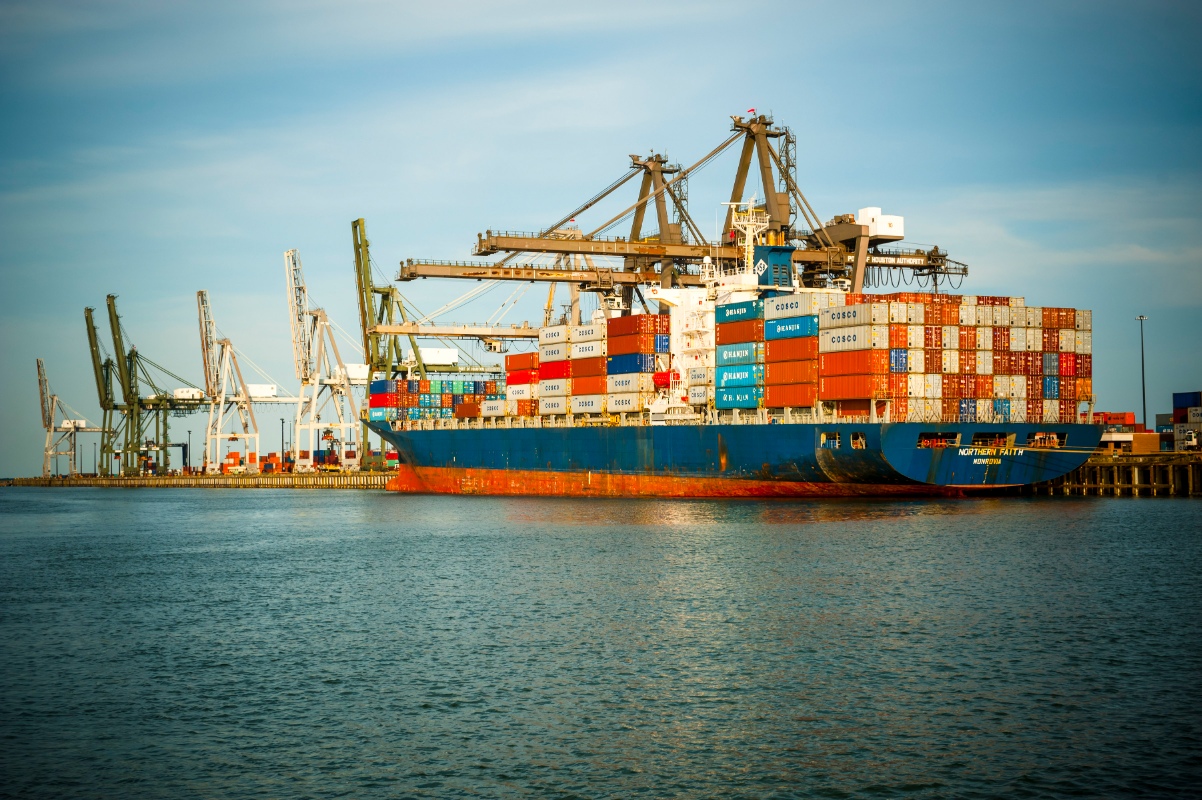Understanding How Culture Operates in Crisis for Small Business Leaders
Published May 19, 2020 by Kelsey Seeker
As part of the Partnership's mission of making Houston the best place to live, work and build a business, we are dedicated to supporting small businesses, particularly during these times of uncertainty by offering resources, guidance and opportunities to connect with fellow members around timely topics.
In this Q&A with Dr. Brent Smith, find insights on leading during times of disruption and how decisions have lasting impacts on company culture. Dr. Smith is the Senior Associate Dean of the Jesse H. Jones Graduate School of Business and a Professor of Management and Psychological Sciences at Rice University.
What interests you about the relationship between personality and organizational culture?
My work on personality and organization culture was driven by both academic and practical interests. Academically, we have theorized many different mechanisms that affect the development of organizational culture. Many of these theories define culture in a way that is too disconnected from the people who inhabit an organization. My work with my mentor, Professor Ben Schneider, was intended to examine the dynamic interplay between the people who occupy and organization and its resulting culture. Practically, I have always been interested in the underlying factors that contribute to employee attraction, retention and experience. The fit between the person and organization (culture) is a primary factor affecting all of these critical processes.
What advice would you give to leaders operating in such an uncertain time?
First, realize that much of your success leading people during uncertainty will be based on the relationship you have already established with them. Do they trust you and have confidence in both your intent and abilities? Trust is a word that means many different things to different people. In this context, I am referring to your employees’ beliefs that your decisions and actions will be in the best interest of the organization in the long-term (and not personal, self-interest). Additionally, people want to know that decisions and actions that will be taken during this uncertain time will be based on due process or fairness. Both of these develop over time as people see and judge your actions and decisions. When trust and a belief in fairness exist, they help frame actions taken during times of uncertainty.
Beyond this, overcommunicate and be honest about what you know and do not know. Uncertainty is unsettling. Communication is our best tool to manage people’s concerns. When an information vacuum exists, people naturally fill in the blanks.
If you think you are communicating enough, multiply times 10 and you are probably there.
Finally, recognize business is not normal and your expectations of people will need to change. Rather than assuming you understand how things have changed, ask your people. How has your job changed? What matters most now? How is the uncertainty affecting your work/deliverables? What concerns you about the future? These are all opportunities to display empathy, understand the true impact of the uncertainty and adjust expectations mutually.
What do you believe is most important when operating during fundamental shifts and disruption?
This is a big question - one I have thought a lot about during the past few crises affecting Houston and our dominant industries. If I had to choose one critical element, I would say that every executive must understand that the choices they make during a crisis will fundamentally affect the culture of their organization in the future. These are hypersensitive/hypervigilant times. The decisions leaders make, how they implement them, how employees are treated all send powerful messages about what the organization values.
It is probably no surprise that I believe culture is the single most important component of strategy execution. If you get it right, all good things happen. If you get it wrong, you are saddled with inefficiencies, misaligned employee behavior, higher turnover rates, and potentially, difficulties recruiting new talent.
Culture is crafted to support strategy and to provide a distinctive identity for a company.
You need to understand what your culture is, what it needs to be during the disruption, and how it might need to evolve based on strategic changes that will be necessary given the shift or disruption in your industry. In my experience, too little thought is paid to this by senior leadership. You must be extremely intentional even when the world before you is unclear.
How would you coach leaders faced with making difficult decisions regarding staff or overall operations? What should they be considering?
I went to graduate school during the tail end of the downsizing and restructuring era. It was a period when organizations were downsizing, offshoring, and outsourcing at an unprecedented rate, largely because their competitors were doing the same and the “Street” demanded greater efficiencies. One of the first research projects I supported focused on the best way to downsize to minimize the “downside” risks to productivity and morale. Although we never published the results of our extensive interviews of Fortune 500 companies, we concluded a few things:
First, make decisions quickly but fairly. The organizations (and individual leaders) that had the worst outcomes delayed unnecessarily their decisions and actions creating paralysis in their organizations and workgroups. You also need good explanations for your reasons and process. It is obvious when it is an existential moment for the company because of complete demand destruction of your products or services. At other times, it is not. Being fair requires communication about how choices and decisions are being made.
Second, provide as much support to those who are adversely affected as possible (severance, outplacement services, etc.). This is one of those moments where culture is defined. If you treat those exiting the organization with fairness, empathy, and support, the employees you retain will understand your values a bit better and have greater trust in you and the organization. Their productivity and engagement will return faster than otherwise would be true. Finally, start redesigning the organization to the new normal as soon as possible. Many legacy systems, processes, and procedures may no longer be valid given the changes to people and structure. Fix them, relax them, or abandon them. But, do so with an eye to the type of organizational culture you want to reinforce.
In small businesses, the owner or another senior manager often wears the HR hat in addition to many others. How can leaders manage their own emotions and needs while being cognitive of their employees’ needs?
Start by understanding what your emotions and needs actually are! I’m an organizational psychologist by training and, I’ve learned that people do not have a firm understanding of who they are or what they need. Freud had a lot to say about this.
These moments provide us a great opportunity for self-reflection and learning precisely because they are so disruptive. As I sit here writing this, I have been sequestered in my home office working remotely for 2 months. Thankfully, I have a job that affords me that luxury and great colleagues who can support my work.
However, the juxtaposition of my work world today vs. pre-lockdown has given me a much greater appreciation of what provides me satisfaction in work and, perhaps more importantly, what detracts from that satisfaction. I now recognize some of the compromises I was making that probably were not in the best interest of my happiness or the effectiveness of my organization.
This unique moment has given me the luxury of prioritizing how I choose to spend my time, what tasks I’m uniquely able to perform, and those that I’m not or others can do just as effectively and efficiently as I could do them. Emotions and needs are manageable when we understand them. As disorienting as this can be for people, these moments provide a critical period to work on adjusting your life to your needs. Do not lose the opportunity.
During times of organizational and external crisis in the past, what process worked well for businesses and entrepreneurs? What aids in an organization’s resiliency?
I’m honestly not sure I can provide an informed answer to the first question. If anything, I could suggest what they have done wrong.
Simply, do not over-react until you have, at least, a hazy understanding of what the future will hold. I can think of too many examples of organizations that attempted to pivot to new markets, products, services or geographies rapidly without an understanding of what was going to unfold over the short-term. They then had to unwind their decisions when the world became clearer.
Regarding resilience, I would suggest you take this opportunity to assess all of the factors that contributed to your lack of resilience in this moment. As much as we attempt to classify organizations along different dimensions (culture, structure, processes, strategic orientations, etc.). It is simply too complex to go too far with this exercise. I would rather senior leaders take this opportunity to understand their organizations and what inhibited their ability to change and adapt. This is a great opportunity for organizational learning and change.
In August, I will be teaching a program on organizational/enterprise change to our Executive MBAs at Rice Business. I intend to ask them this very question; examine your organization and document the organizational and cultural attributes that facilitated or inhibited change during this time.
What encouragement would you offer to small business owners and business leaders during this time?
You have been successful for a reason. Most of those reasons remain valid. There will be a backside to the current pandemic and economic crisis. Constantly evaluate what is valid about your business model and organization and what might not be based on changing circumstances driven by the market implications of this time. Do not hold unnecessarily to history and do not adapt to quickly. Very broadly, there is a reason why the human animal has been so effective at conquering its environment. Our cultures, structures, and ability to collaborate in rather large groups create enormous resilience.
Crisis promotes pessimism. However, crises are not new. Your organization has likely successfully overcome many. Be a historian of those past moments and help others understand them.
In addition to our Small Biz Insider podcast series, videos and news, we are pleased to offer virtual events throughout Small Business Month designed to provide small businesses with expert insight and networking opportunities. These events are generously supported by Comcast Business.
 The Houston Report
The Houston Report




















